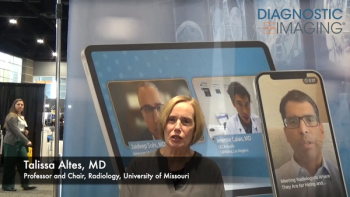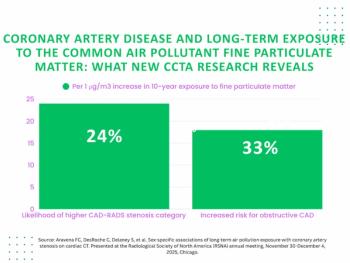
Studies underscore value of CT colonography training
Continuing medical education is a must for radiologists planning to perform CT colonography, according to two studies presented by U.K. researchers at the RSNA meeting on Sunday.
Continuing medical education is a must for radiologists planning to perform CT colonography, according to two studies presented by U.K. researchers at the RSNA meeting on Sunday.
One study conducted in the department of specialist radiology at University College Hospital in London revealed that CT colonography reading skills among 13 nonacademic radiologists at seven British health facilities were highly variable and tied to the clinician's experience with the procedure.
Individual accuracy of the physicians, all of whom subspecialize in abdominal radiology, ranged from 53% to 93% in the interpretation of 15 cases validated by conventional colonoscopy. Ten of the cases visualized a cancer or polyp larger than 10 mm.
The mean accuracy of the physicians was 75%. But the accuracy rate among experienced readers, those who have read as many as 350 cases, was 88%. Among nonexperts, who have read as few as five cases, the accuracy rate fell to 71%.
Average reading time for CT colonography studies was 11.7 minutes, according to coauthor David Burling.
In a second study, Dr. Emily Tam of University College Hospital-University Park Clinic found that general radiology experience does not guarantee proficiency when physicians begin performing virtual colonoscopy procedures.
Her test of reading performance found that even without specific training in VC, an inexperienced resident can outperform a board-certified radiologist with subspecialty training in gastrointestinal radiology and a radiologist with more general training. For 1 mm to 5 mm polyps, the resident's detection rate was 14%, the same rate as the specialist and double the 7% rate of the generalist.
For polyps ranging in size from 6 mm to 9 mm, the rates between the resident, specialist, and generalist were 42%, 25%, and 25%, respectively. For lesions larger than 10 mm, detection rates were 83%, 17%, and 67%, respectively.
The specialist made 11 false positive determinations, one more than the resident. The generalist was responsible for seven false positives.
Errors tended to be perceptual, rather than due to incorrect classification of abnormalities. About 85% of the resident's errors were perceptual.
About 81% of the errors made by the gastrointestinal specialist were perceptual, and 86% of those made by the generalist were perceptual.
Tam attributed the unexpected results to a lack of training in virtual colonoscopy. Several radiologists in the audience offered to recruit the resident.
Newsletter
Stay at the forefront of radiology with the Diagnostic Imaging newsletter, delivering the latest news, clinical insights, and imaging advancements for today’s radiologists.




























